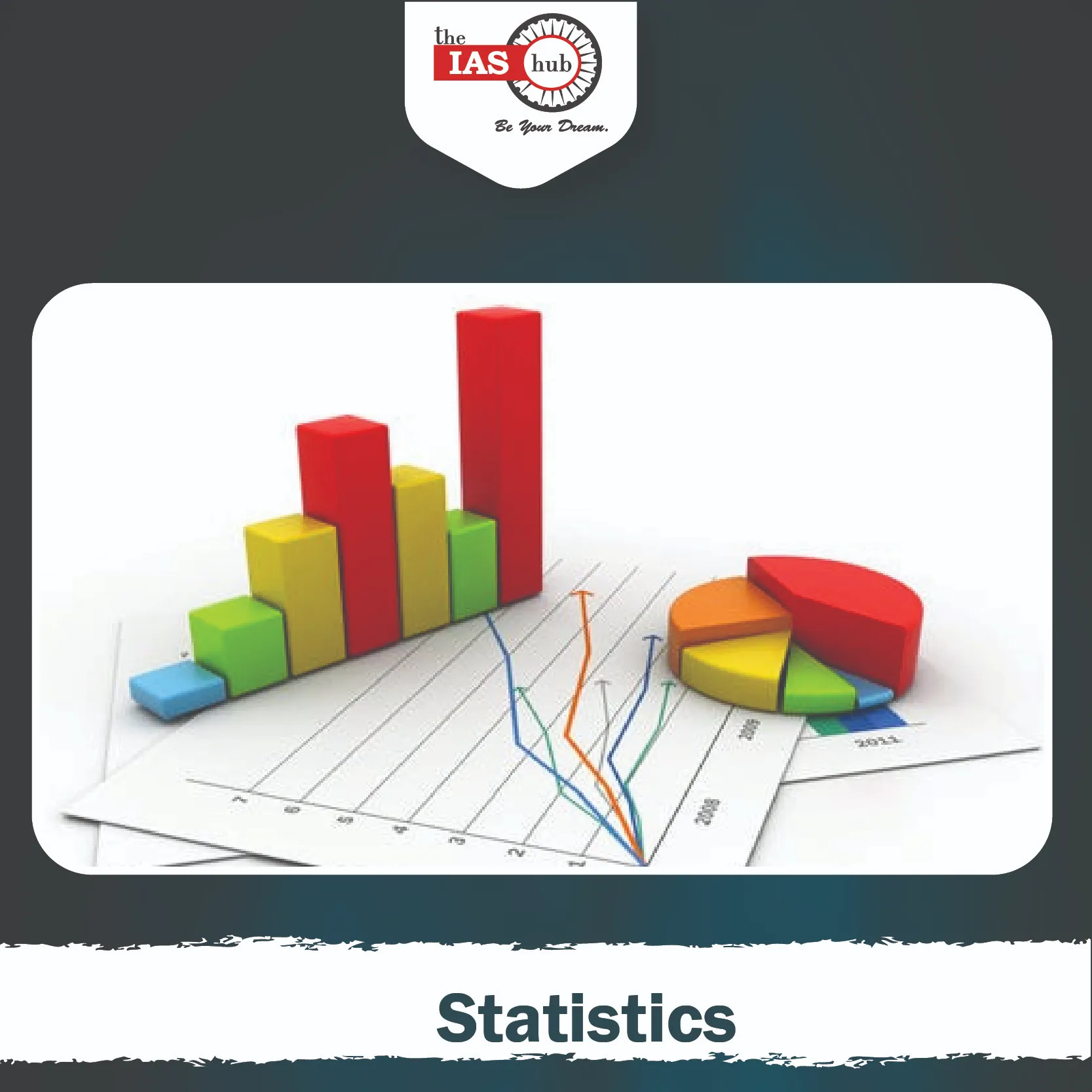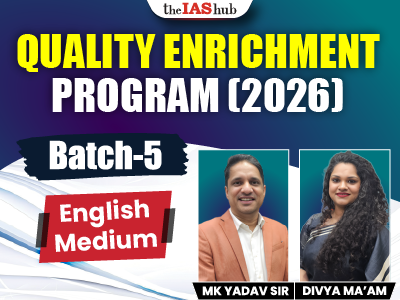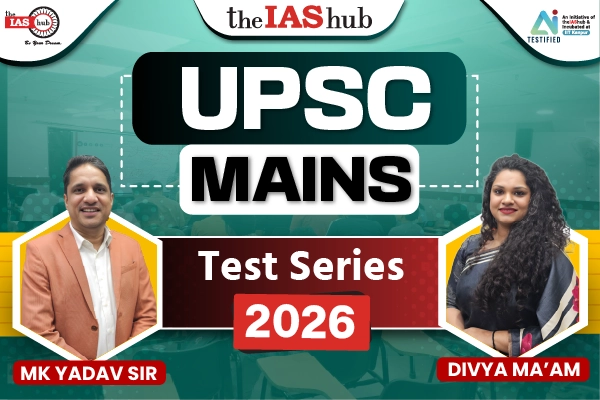Discover everything you need to know about Statistics optional for UPSC. Learn about the syllabus, books, notes, topper strategies, and more in this comprehensive guide.


Statistics is one of the most popular optional subjects for the UPSC Civil Services Examination, especially for candidates with a background in mathematics or statistics. It is a subject that not only helps you understand data analysis and interpretation but also overlaps with the General Studies papers, making it a strategic choice for many aspirants.
In this article, we will cover everything you need to know about Statistics optional, including its syllabus, books, notes, previous year question papers (PYQs), topper strategies, and more. Whether you are a beginner or someone looking to refine your preparation, this guide will help you navigate through the subject with ease.
Statistics is a scoring optional subject with a well-defined syllabus, making it easier to prepare systematically. It is highly analytical, which helps in developing logical reasoning and problem-solving skills. Here are some reasons why Statistics is a great choice as an optional subject for the UPSC exam:
The Statistics optional syllabus is divided into two papers, each covering different aspects of the subject. Here is a brief overview of the syllabus:
| Statistics Optional Paper-I Syllabus | |
| Section | Topics Covered |
| 1. Probability | – Sample space and events, probability measure, and probability space.
– Random variable as a measurable function. – Distribution function of a random variable, discrete and continuous-type random variable. – Probability mass function, probability density function. – Vector-valued random variable, marginal and conditional distributions. – Stochastic independence of events and of random variables. – Expectation and moments of a random variable, conditional expectation. – Convergence of a sequence of random variables in distribution, in probability, in r-th mean, and almost everywhere. – Criteria and inter-relations for convergence, Chebyshev’s inequality. – Khintchine’s weak law of large numbers, strong law of large numbers, and Kolmogorov’s theorems. – Probability generating function, moment generating function, characteristic function. – Inversion theorem, uniqueness theorem, Lindeberg-Levy form of central limit theorem. – Standard discrete and continuous probability distributions: Bernoulli, binomial, Poisson, geometric, negative binomial, hypergeometric, multinomial, rectangular, normal, exponential, Cauchy, gamma, beta, and Pareto. – Bivariate normal distribution, marginal and conditional distributions. |
| 2. Statistical Inference | – Consistency, unbiasedness, efficiency, sufficiency, completeness, ancillary statistics.
– Factorization theorem, exponential family of distribution and its properties. – Uniformly Minimum Variance Unbiased (UMVU) estimation, Rao-Blackwell and Lehmann-Scheffe theorems. – Cramer-Rao inequality for a single parameter. – Estimation methods: method of moments, method of maximum likelihood, method of least squares, method of minimum chi-square, modified minimum chi-square. – Properties of maximum likelihood and other estimators, asymptotic efficiency. – Prior and posterior distributions, loss function, risk function, minimax estimator, Bayes estimators. – Non-randomized and randomized tests, critical function, Most Powerful (MP) tests, Neyman-Pearson lemma. – Uniformly Most Powerful (UMP) tests, monotone likelihood ratio, similar and unbiased tests. – Uniformly Most Powerful Unbiased (UMPU) tests for a single parameter. – Likelihood ratio test and its asymptotic distribution. – Confidence bounds and their relation with tests. – Kolmogorov’s test for goodness of fit and its consistency. – Sign test and its optimality, Wilcoxon signed-ranks test and its consistency. – Kolmogorov-Smirnov two-sample test, run test, Wilcoxon-Mann-Whitney test, median test, their consistency and asymptotic normality. – Wald’s Sequential Probability Ratio Test (SPRT) and its properties, Operating Characteristic (OC) and Average Sample Number (ASN) functions for tests regarding parameters for Bernoulli, Poisson, normal, and exponential distributions. – Wald’s fundamental identity. |
| 3. Linear Inference and Multivariate Analysis | – Linear statistical models, theory of least squares and analysis of variance.
– Gauss-Markoff theory, normal equations, least squares estimates and their precision. – Test of significance and interval estimates based on least squares theory in one-way, two-way, and three-way classified data. – Regression analysis: linear regression, curvilinear regression, orthogonal polynomials, multiple regression, multiple and partial correlations. – Estimation of variance and covariance components. – Multivariate normal distribution, Mahalanobis’s D² and Hotelling’s T² statistics and their applications and properties. – Discriminant analysis, canonical correlations, principal component analysis. |
| 4. Sampling Theory and Design of Experiments | – Fixed-population and super-population approaches, features of finite population sampling.
– Probability sampling designs: simple random sampling with and without replacement, stratified random sampling, systematic sampling. – Cluster sampling, two-stage and multi-stage sampling. – Ratio and regression methods of estimation involving one or more auxiliary variables. – Two-phase sampling, probability proportional to size sampling with and without replacement. – Hansen-Hurwitz and Horvitz-Thompson estimators, non-negative variance estimation with reference to the Horvitz-Thompson estimator. – Non-sampling errors. – Fixed effects model (two-way classification), random and mixed effects models (two-way classification with equal observations per cell). – Completely Randomized Design (CRD), Randomized Block Design (RBD), Latin Square Design (LSD) and their analyses. – Incomplete block designs, concepts of orthogonality and balance, Balanced Incomplete Block Design (BIBD). – Missing plot technique, factorial experiments (including 2⁴ and 3²), confounding in factorial experiments, split-plot and simple lattice designs. – Transformation of data, Duncan’s multiple range test. |
| Statistics Optional Paper II Syllabus | |
| Section | Topics Covered |
| 1. Industrial Statistics | – Process and product control, general theory of control charts.
– Different types of control charts for variables and attributes: X̄ (X-bar), R (Range), s (Standard deviation), p (Proportion defective), np (Number of defectives), and cumulative sum charts. – Single, double, multiple, and sequential sampling plans for attributes. – Operating Characteristic (OC), Average Sample Number (ASN), Average Outgoing Quality (AOQ), and Average Total Inspection (ATI) curves. – Concepts of producer’s and consumer’s risks, Acceptable Quality Level (AQL), Lot Tolerance Percent Defective (LTPD), and Average Outgoing Quality Limit (AOQL). – Sampling plans for variables, use of Dodge-Romig tables. – Concept of reliability, failure rate, and reliability functions. – Reliability of series and parallel systems and other simple configurations. – Renewal density and renewal function. – Failure models: exponential, Weibull, normal, lognormal. – Problems in life testing, censored and truncated experiments for exponential models. |
| 2. Optimization Techniques | – Different types of models in Operations Research, their construction, and general methods of solution.
– Simulation and Monte-Carlo methods. – Formulation of Linear Programming (LP) problem, simple LP model, and its graphical solution. – The simplex procedure, the two-phase method, and the M-technique with artificial variables. – The duality theory of LP and its economic interpretation. – Sensitivity analysis. – Transportation and assignment problems. – Rectangular games, two-person zero-sum games, methods of solution (graphical and algebraic). – Replacement of failing or deteriorating items, group and individual replacement policies. – Concept of scientific inventory management and analytical structure of inventory problems. – Simple models with deterministic and stochastic demand with and without lead time. – Storage models with particular reference to dam type. – Homogeneous discrete-time Markov chains, transition probability matrix, classification of states, and ergodic theorems. – Homogeneous continuous-time Markov chains, Poisson process. – Elements of queuing theory: M/M/1, M/M/K, G/M/1, and M/G/1 queues. – Solution of statistical problems on computers using well-known statistical software packages like SPSS. |
| 3. Quantitative Economics and Official Statistics | – Determination of trend, seasonal and cyclical components.
– Box-Jenkins method, tests for stationary series, ARIMA models, and determination of orders of autoregressive and moving average components. – Forecasting. – Commonly used index numbers: Laspeyre’s, Paasche’s, and Fisher’s ideal index numbers. – Chain-base index number, uses, and limitations of index numbers. – Index numbers of wholesale prices, consumer price, agricultural production, and industrial production. – Tests for index numbers: proportionality, time-reversal, factor-reversal, and circular. – General linear model, ordinary least square, and generalized least squares methods of estimation. – Problem of multi-collinearity, consequences, and solutions of multi-collinearity. – Autocorrelation and its consequences. – Heteroscedasticity of disturbances and its testing. – Test for independence of disturbances. – Concept of structure and model for simultaneous equations. – Problem of identification: rank and order conditions of identifiability. – Two-stage least squares method of estimation. – Present official statistical system in India relating to population, agriculture, industrial production, trade, and prices. – Methods of collection of official statistics, their reliability and limitations. – Principal publications containing such statistics. – Various official agencies responsible for data collection and their main functions. |
| 4. Demography and Psychometry | – Demographic data from census, registration, NSS, and other surveys, their limitations, and uses.
– Definition, construction, and uses of vital rates and ratios. – Measures of fertility, reproduction rates, morbidity rate, standardized death rate. – Complete and abridged life tables, construction of life tables from vital statistics and census returns. – Uses of life tables. – Logistic and other population growth curves, fitting a logistic curve. – Population projection, stable population, quasi-stable population. – Techniques in the estimation of demographic parameters. – Standard classification by cause of death, health surveys, and use of hospital statistics. – Methods of standardization of scales and tests: Z-scores, standard scores, T-scores, percentile scores. – Intelligence quotient and its measurement and uses. – Validity and reliability of test scores and its determination. – Use of factor analysis and path analysis in psychometry. |
Choosing the right books is crucial for your preparation. Here are some recommended books for Statistics optional:
Preparing your own notes is one of the best ways to retain information. However, if you are short on time, you can refer to the notes provided by toppers or coaching institutes. Here are some tips for making effective notes:
Statistics optional question paper is divided into two papers, each carrying 250 marks. The questions are a mix of theoretical and analytical types. Here are some tips for attempting the question paper:
If you find it challenging to prepare on your own, you can consider joining a coaching institute. Here are some benefits of joining a coaching institute:
Statistics optional syllabus is available in PDF format on the official UPSC website. You can download it and use it as a reference for your preparation. Here are some tips for using the syllabus effectively:
Many IAS toppers have chosen Statistics as their optional subject. Here are some tips from toppers:
Several candidates have excelled in the exam by choosing Statistics as their optional subject. Its analytical nature and scoring potential have contributed to their success. Here, we provide a list of toppers who opted for Statistics, showcasing how this subject choice played a role in their remarkable achievements.
| Name | Year | Rank |
| Rajesh Kumar | 2017 | 14 |
| Anjali Singh | 2018 | 21 |
| Vikram Verma | 2019 | 17 |
| Neha Sharma | 2020 | 19 |
| Ravi Patel | 2021 | 12 |
Statistics is a highly rewarding optional subject for the UPSC exam. With the right strategy, resources, and dedication, you can score well in this subject. Make sure to cover the entire syllabus, practice answer writing, and revise regularly. Use the recommended books, notes, and previous year question papers to enhance your preparation. By following these tips, you can master Statistics and increase your chances of success in the UPSC exam.
Are you preparing for UPSC 2025? Join IAShub’s UPSC coaching batches to boost your preparation. Enroll now!
Some of the best books for Statistics optional are "Probability and Statistics by Morris H. DeGroot," "Statistical Methods by S.P. Gupta," and "Applied Statistics by J.S. Milton."
To prepare for Statistics optional, understand the syllabus, make a study plan, practice answer writing, and revise regularly. Use recommended books and previous year question papers.
The syllabus for Statistics optional is divided into two papers: Paper-I (Probability and Statistics) and Paper-II (Applied Statistics).
To write effective answers, structure your answers well, use headings and subheadings, and support your answers with examples. Practice writing answers within the time limit.


Refine your answer writing skills and elevate your UPSC preparation with personalized support and expert feedback.
Fill out the form to get started with the program or any other enquiries !








Are you dreaming of becoming an IAS officer? Then, IAShub can be your best guide. It is one of the Best IAS Coaching in Delhi. Many students who want to clear the UPSC exam join IAShub for learning. The institute gives both online and offline classes. Their teachers are experienced and helpful. They easily explain every topic. Students also get notes, tests, and tips to do well in the exam.
IAShub is in Delhi and is trusted by many UPSC students. It offers coaching for every part of the UPSC exam – Prelims, Mains, and Interview. The classes are simple and easy to understand. The teachers are experts and guide students in the right way. IAShub is also known for its helpful notes, test series, and answer-writing practice. IAShub is the best coaching in Delhi and also gives UPSC Online Classes. This helps students from any place in India to learn. The online classes are live and also recorded. So, students can watch them anytime. These classes cover the full UPSC syllabus.
Here are some important services provided by IAShub:
The UPSC Civil Services Exam has three parts:
This exam is tough, but with the right guidance, it becomes easy to manage. Students must study smart and stay regular.
IAShub supports students from the beginning to the end. It gives the right books, tests, and notes. The classes are easy to follow, and the teachers are always ready to help. Students get personal doubt sessions too. The test series and answer checking help students learn where they need to do better. Also, free study materials save time and money.
IAShub also guides students during the final stage – the interview. Experts take mock interviews and give useful tips. This full support makes IAShub one of the best IAS coaching in Delhi.
